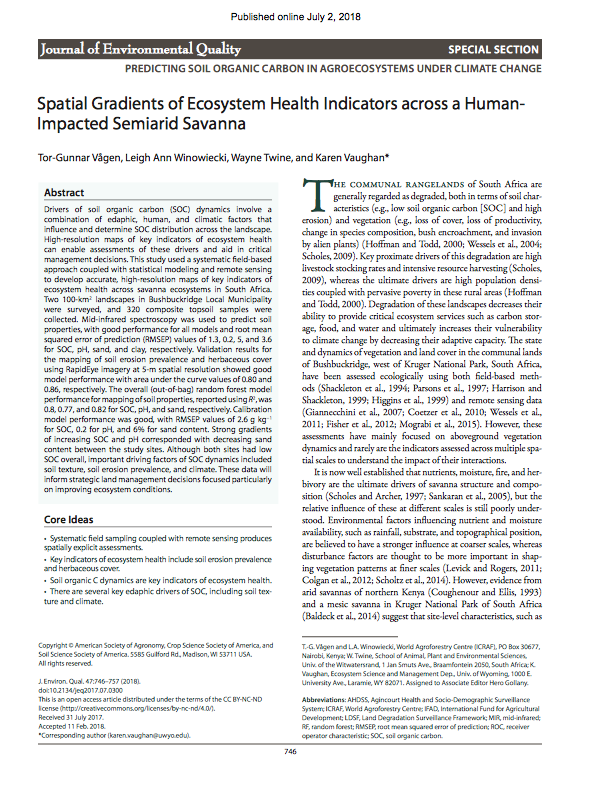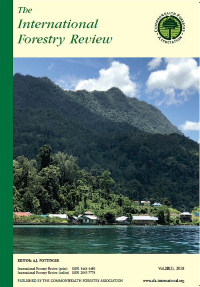Drivers of soil organic carbon (SOC) dynamics involve a combination of edaphic, human, and climatic factors that influence and determine SOC distribution across the landscape. High-resolution maps of key indicators of ecosystem health can enable assessments of these drivers and aid in critical management decisions. This study used a systematic field-based approach coupled with statistical modeling and remote sensing to develop accurate, high-resolution maps of key indicators of ecosystem health across savanna ecosystems in South Africa. Two 100-km2 landscapes in Bushbuckridge Local Municipality were surveyed, and 320 composite topsoil samples were collected. Mid-infrared spectroscopy was used to predict soil properties, with good performance for all models and root mean squared error of prediction (RMSEP) values of 1.3, 0.2, 5, and 3.6 for SOC, pH, sand, and clay, respectively. Validation results for the mapping of soil erosion prevalence and herbaceous cover using RapidEye imagery at 5-m spatial resolution showed good model performance with area under the curve values of 0.80 and 0.86, respectively. The overall (out-of-bag) random forest model performance for mapping of soil properties, reported using R2, was 0.8, 0.77, and 0.82 for SOC, pH, and sand, respectively. Calibration model performance was good, with RMSEP values of 2.6 g kg?1 for SOC, 0.2 for pH, and 6% for sand content. Strong gradients of increasing SOC and pH corresponded with decreasing sand content between the study sites. Although both sites had low SOC overall, important driving factors of SOC dynamics included soil texture, soil erosion prevalence, and climate. These data will inform strategic land management decisions focused particularly on improving ecosystem conditions.
Authors:
Vagen T-G, Winowiecki LA, Twine W, Vaughan K
Year:
2018


